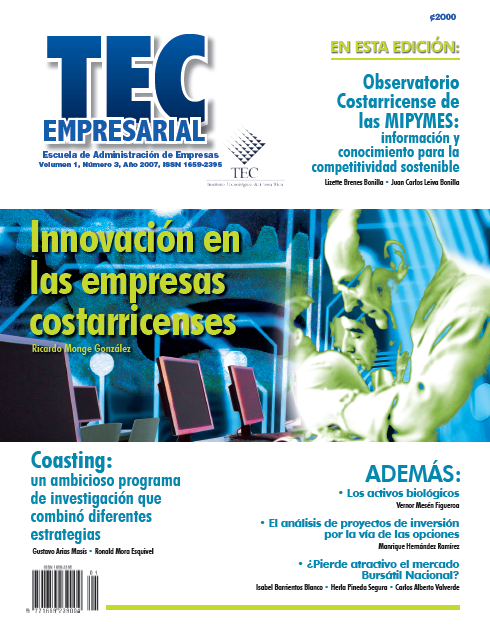¿Pierde atractivo el Mercado Bursátil Nacional?
Main Article Content
Abstract
El articulo pretende explicar la aparente pérdida de atractivo que ha sufrido el mercado bursátil costarricense como fuente de financiamiento entre el sector empresarial, reflejado en el hecho de que desde el año 2001, 24 empresas han optado por retirarse como emisoras y muchas otras siguen inscritas pero inactivas.
Las opiniones de empresarios, expertos y jerarcas del sector bursátil, recolectadas por medio del trabajo de campo, concuerdan en la mayoría de las razones, que van desde un exceso de trámites que desmotivan a los emisores hasta una pérdida de competitividad frente a otras opciones financieras, como crédito corporativo, líneas de crédito, descuento de facturas, entre otras.
Específicamente de la información recolectada se desprende que las empresas se retiran del mercado bursátil por las siguientes razones: costos de emisión, la publicación de hechos relevantes, los trámites engorrosos para la inscripción, disconformidad con el mecanismo existente para las clasificaciones de riesgo y fortaleza del sector de bancario.
ABSTRACT
This article seeks to explain what is currently happening in the stock and banking markets. The fact that since 2001, 24 companies have chosen to un-register in the stock market as debt bond issuers and many others currently registered have not issued bonds recently seems to show that something is not functioning properly.
The opinion of businessmen, experts and stock market administrators collected by field work uniformly agree in most of the causes stated, going from excessive requirements that doesn’t stimulate issuers, to a loss of competitiveness to other financial options like the financing options offered by banks (corporate credit, credit lines, factoring, etc.)
According to the information collected the main reasons offered by companies to opt out as bond issuers are: high cost of emission, relevant fact publication requirements, troublesome registration proceedings, and disagreement with the current risk classification mechanism as well as the strength of the banking sector.
Article Details
The digital version of the journal is registered under the BY-NC-ND 4.0 Creative Commons license. Therefore, this work may be copy and redistribute the material in any medium or format, as long as you give appropriate credit, provide a link to the license, and indicate if changes were made. You may do so in any reasonable manner, but not in any way that suggests the licensor endorses you or your use.
The authors keep the copyright and give the journal the right of the first publication and the possibility of editing, reproducing, distributing, exhibiting and communicating in the country and abroad through printed and electronic means. On the other hand, the author declares to assume the commitment on any litigation or claim related to the rights of intellectual property, exonerating of responsibility to the Business School of the Costa Rica Institute of Technology.


